www.rhci-online.net/radiogram/radiogram.htm
██╗██████╗ ██████╗ ██████╗ █████╗ ██████╗ ██╗ ██████╗ ██████╗ ██████╗ █████╗ ███╗ ███╗
██║██╔══██╗██╔════╝ ██╔══██╗██╔══██╗██╔══██╗██║██╔═══██╗██╔════╝ ██╔══██╗██╔══██╗████╗ ████║
██║██████╔╝██║ ██████╔╝███████║██║ ██║██║██║ ██║██║ ███╗██████╔╝███████║██╔████╔██║
██║██╔══██╗██║ ██╔══██╗██╔══██║██║ ██║██║██║ ██║██║ ██║██╔══██╗██╔══██║██║╚██╔╝██║
██║██████╔╝╚██████╗ ██║ ██║██║ ██║██████╔╝██║╚██████╔╝╚██████╔╝██║ ██║██║ ██║██║ ╚═╝ ██║
╚═╝╚═════╝ ╚═════╝ ╚═╝ ╚═╝╚═╝ ╚═╝╚═════╝ ╚═╝ ╚═════╝ ╚═════╝ ╚═╝ ╚═╝╚═╝ ╚═╝╚═╝ ╚═╝
RSID: <<2016-08-03T20:30Z
MFSK-32 @
6070000+1500>>
START START
QUESTA E' IBC, ITALIAN BROADCASTING CORPORATION
TRASMISSIONI IN ITALIANO:
MERCOLEDI' 20-22 UTC 6070 KHZ
VENERDI' 01-01.30 UTC 9955 KHZ
SABATO 01.30-02 UTC 11580 KHZ
website: HTTP://WWW.IBCRADIO.WEBS.COM
email: IBC@EUROPE.COM
"IBC DIGITAL" "IBC DIGITAL" "IBC DIGITAL"
OGNI MERCOLEDI' 20.30-21.00 UTC 6070 KHZ
-"RADIOPASSIONI" A CURA DI ANDREA LAWENDEL, IN MFSK 32 (1500 Hz)
-"DX ITALIA DX NEWS", NOTIZIE PER RADIOAMATORI TRATTE DAL BOLLETTINO DI I2MQP,
IN OLIVIA 16-500 (2200 Hz)
OGNI VENERDI' 01.25-01.30 UTC 9955 KHZ IN MFSK32
OGNI SABATO
01.55-02 UTC 11580 KHZ IN MFSK32
-"DX ITALIA DX NEWS", NOTIZIE PER RADIOAMATORI TRATTE DAL BOLLETTINO DI I2MQP,
IN MFSK 32 (1500 Hz)
BUONA DECODIFICA!
.
.
.
"RADIOPASSIONI" "RADIOPASSIONI"
(http://www.radiopassioni.it/)
Larga banda in HF: una magia ionosferica moltiplica la capacità trasmissiva
Il satellite sembra aver risolto tutti i nostr problemi di comunicazione radio
in situazioni "normali" e critiche, specialmente in ambiti professionali,
civili o militari che siano. Ma è davvero così? In realtà la comunicazione
satellitare continua ad avere i suoi inconvenienti, anche facendo la tara dei
costi e delle complessità di qualsiasi messa in orbita. Le antenne del satellite
possono non coprire adeguatamente le aree di trasmissione e ricezione,
oppure possono richiedere infrastrutture a terra non sempre dispiegabili con
facilità, o ancora soffrire di disservizi di varia natura, incluse interferenze
e blackout.
Per questo motivo la propagazione HF via ionosferica continua a rappresentare
una valida alternativa, che aziende e organizzazioni non smettono di studiare
ai fini di una ulteriore ottimizzazione delle tecniche trasmissive. Tra gli
sperimentatori c'è MITRE Corporation (http://www.mitre.org/), una società no
profit che gestisce negli Stati Uniti una rete di centri di ricerca e sviluppo
sponsorizzati a livello federale. MITRE ha richiesto e ottenuto dalla FCC, il
regolatore americano, un certo numero di frequenze HF per condurre la
sperimentazione di un nuovo sistema di trasmissione dati a larga banda sulle
onde
corte, un sistema che sfrutta la tecnica del MIMO (multiple input, multiple
output) già ampiamente utilizzata per la telefonia cellulare LTE su frequenze
UHF-SHF.
MIMO consiste nell'utilizzare un unico canale radio, una singola frequenza per
intendersi, per trasmettere più flussi di comunicazione che seguono percorsi
propagativi diversi. MITRE intende applicare questo stesso metodo alla
trasmissione ionosferica in onde corte sfruttando una particolarità nota ma poco
conosciuta del magnetoplasma (la ionosfera è un plasma magnetizzato). Quando
indirizziamo un segnale radio verso la ionosfera questo segnale si "splitta" in
più componenti magnetiche ortogonali. Due di queste componenti sono
perpendicolari al campo elettrico trasmesso, il modo ordinario o O-mode (che in
pratica
conserva le caratteristiche del segnale originario mentre questo attraverso il
mezzo propagativo, in fisica si dice che ha la stessa "relazione di
dispersione") e il modo straordinario X-mode, che ha una relazione di
dispersione più compessa.
Il risultato di questa separazione - matematicamente complessa - è molto
semplice: sfruttando le due modalità in teoria è possibile trasmettere due
canali
che operano sulla stessa identica frequenza e sullo stesso tracciato geografico,
allargando la banda complessiva. MITRE, come spiega questo articolo di
TVTechnology (http://www.tvtechnology.com/distribution/0099/list-of-experimental-licenses-reveals-interesting-hf-data-comm-experiments/274152),
ritiene di
poter ottenere densità comprese tra 1 e 4 bit per Hertz, in pratica un totale di
256 kilobit con correzione di errore per una banda di 100 kHz. I test appena
autorizzati dalla FCC (http://transition.fcc.gov/Daily_Releases/Daily_Business/2015/db0112/DOC-331433A1.pdf)
avverranno su frequenze comprese tra 2505.00 -
4100.00, 4210.00 - 4995.00, 5005.00 - 6210.00, 6320.0 - 8250.00, 8450.00 -
9995.00, 10005.00 - 12200.00, 13500.00 - 14990.00 e 15010.00 – 16000.00 kHz.
Un paper già pubblicato da MITRE (http://www.mitre.org/sites/default/files/publications/high-data-rate-wideband-HF-demo-14-1120.pdf),
fornisce tutti i
dettagli di queste tecniche, mentre se volete leggere una analisi a uso e
consumo dei radioamatori vi suggerisco questa presentazione della Katy Radio
Amateurs Society (http://www.katyars.com/wp-content/uploads/2012/03/HF-Propagation.pptx),
tra l'altro molto utile per approfondire l'argomento della
propagazione in HF.
Il pubblico è connesso, un saggio esplora le nuove forme di partecipazione della
creatività in radio
È uscita dall'editore universitario Routledge il saggio intitolato "Radio
Audiences and Participation in the Age of Network Society"
(http://www.routledge.com/books/details/9780415739153/)
l'ultima fatica di Tiziano Bonini curata insieme alla collega barcellonese Belén
Monclús. I due
ricercatori universitari (Tiziano è anche regista e autore radiofonico) si
concentrano su un aspetto particolare della radiofonia contemporanea: il suo
pubblico e in particolare sulle nuove forme di interazione - e co-creazione di
contenuti - rese possibili dalle tecnologie della rete. Per la verità il tema
dell'interazione con la radio nel suo "farsi" non è una novità. Anzi la vera
invenzione delle radio libere degli anni 70, almeno in Europa, non è stato il
modello economico basato sulla pubblicità (che già 40 anni fa era cosa vecchia),
bensì l'interazione telefonica in diretta, qualcosa di impensabile per tutti
i 50 anni della controllatissima radiofonia pubblica, la quale frapponeva tra sé
e l'ascoltatore una barriera impenetrabile, o quasi.
Oggi Internet consente forme di partecipazione innovative, che sono oggetto
dell'analisi degli autori raccolti in questo saggio. Il libro ha anche una sua
pagina su Facebook (https://www.facebook.com/pages/Radio-Audience-and-Participation-in-the-Age-of-Network-Society/869169869799842)
e direi che si inserisce
magnificamente anche in un contesto di funding partecipativo e di modelli
alternativi per il finanziamento della programmazione radiofonica sia pubblica,
sia
privata (tema, quello della finanza e economia partecipativa, che il professor
Bonini segue già da tempo).
Il saggio è liberamente accessibile da Accademia.eu (http://www.academia.edu/10054211/The_Listener_as_Producer_the_Rise_of_the_Networked_Listener)
In Germania la radio digitale fa sempre più presa
In Germania la radio digitale DAB+ viene presa sempre più sul serio e a quattro
anni dal rilancio (ricordo che in Germania la prima fase del DAB era stata
dichiarata fallimentare dalla magistratura contabile, che aveva fissato le
regole per un rifinanziamento in
compartecipazione pubblica e privata) avrebbe secondo il responsabile del
consorzio promotore DRD Digitalradio Deutschland (http://www.digitalradio.de/index.php/de/),
un "punto di non ritorno", in termini di offerta di programmi, percentuali di
ascolto e apparecchi
venduti. In effetti i modelli di radio digitale saranno ancora più numerosi
all'IFA di Berlino, il grande salone dell'elettronica di consumo che si aprirà a
inizio settembre. Tra questi, una delle radio più curiose che mi si capitato di
vedere: è concepita come
ricevitore direttamente integrato in una spina schuko da inserire nella presa,
senza cavi visibili (ma viene fornita una antenna removibile in caso il segnale
fosse troppo debole):
Ubisound2go viene prodotta dalla società UbiSound (http://ubisound.de/produkt/),
è disponibile nei colori bianco e nero e costa 119 euro. Pensata come kitchen
radio o per il tavolino da notte, può essere facilmente messa in valigia per i
viaggi perché pesa circa tre
etti.
END
"RADIOPASSIONI" "RADIOPASSIONI" "RADIOPASSIONI"
( http://www.radiopassioni.it/
)
"IBC DIGITAL" "IBC DIGITAL"
SWITCH NOW TO OLIVIA 16-500(2200 Hz)
RSID: <<2016-08-03T20:42Z OL
16-500 @ 6070000+2200>>
START
"DX ITALIA DX NEWS" by I2MQP
ON NOW OR WITHIN NEXT WEEK - IN ARIA ORA O ENTRO UNA SETTIMANA
5Z Kenya Now - Aug end JM1CAX as /5Z4 qsl H.C.
8T Antartica Now - Dec 2016 VU3BPZ as BT2BH qsl I1HYW
9A Croatia Aug 1 - Sep 30 PA4JJ as /9A qsl OQRS
D2 Angola NOW CT1CRS as D2XX. No more details qsl H.C.
JD Minami Torishima Aug - Sep JG8NQJ as /8 qsl JA8CJY dir JG8NQJ bur
OH0 Aland Aug 6 - Aug 11 OH2IS as /OH0
T2 Tuvalu Jul 21 - Aug 18 KC0W as T2COW
UA Russia Jun 3 - Sep 3 RI1C from several islands in the EU-133 qsl RW1F OQRS
V3 Belize Now - Oct end PA0C as V31HV & V31HV/p qsl H.C. dir
V3 Belize Jul 23 - Aug 12 W2JHP as V31TA qsl EA5GL dir only
YJ Vanatu Jul 25 - Aug 20 YJ8RN as /p from OC-110 qsl NZ4DX
FUTURE OPERATIONS --- OPERAZIONI FUTURE
3D2 Fiji Oct 21 - Oct 25 JA1NLX & JI1CNA as 3D2YA qsl OQRS only
3W Vietnam Oct 29 - Oct 30 N0ODK as 3W2DK qsl H.C.
3Y Bouvet 2016 - 2017 3Y0F will be the call of the expedition managed by UN7PCZ
3Y Bouvet Dec 1 2017 - Jan 31 2018 K0IR K4UEE & LA6VM are announcing their
operation
6V Senegal Nov 7 - Nov 19 Italian team from AF-045 as 6V1IS qsl IK7JWX
6Y Jamaica Aug 6 - Aug 20 DK9PY as 6Y6N qsl H.C.
6Y Jamaica Oct 21 - Nov 1 N4SF,K8AJ & W4GE as /6Y. As 6Y4V in the contest qsl
Dir AA4V LoTW
8P Barbados Oct 28 - Oct 29 8P6ET as 8P1W qsl KU9C
8Q Maldives Nov 20 - Dec 3 SP team as 8Q7SP SP6FXY qsl OQRS bur
9K Kuwait Oct 29 - Oct 30 OK2GS as 9K2K qsl Clublog
9M6 E.Malaysia Nov 26 - Nov 27 JE1JKL as 9M6NA from OC133 qsl H.C. LoTW
BS7 Scarborou gh. Reef 2016 A BY group is planning a possible operation
CE Chile Nov 14 - Nov 11 XR5M from SA-061 qsl CE6CT
CE0X San Felix April 2017 CE5WQO announce an expedition for next year in april
CE0Y Easter Isl. Oct 24 - Dec 2 RZ3FW as CE0Y/RZ3FW and R4WAA as CE0Y/R4WAA qsl
H.C.
CT8 Azores Aug 5 - Aug 19 F5IRO as /CT8 from EU-003 qsl H.C dir & bur
CY St. Paul Aug 19 - Aug 29 CY9C 11 ops with 2 stations qsl WA4DAN OQRS
D6 Comoros Sep 18 - Oct 1 OK1FPS, OK1FCJ OK6DJ as D66D qsl OK6DJ Clublog
END
"DX ITALIA DX NEWS" by I2MQP
"IBC DIGITAL"
END
██████╗ ██╗ ██████╗ ██╗ ██████╗ ██╗ ██╗
██╔══██╗██║██╔════╝ ██║ ██╔══██╗╚██╗██╔╝
██║ ██║██║██║ ███╗██║ ██║ ██║ ╚███╔╝
██║ ██║██║██║ ██║██║ ██║ ██║ ██╔██╗
██████╔╝██║╚██████╔╝██║ ██████╔╝██╔╝ ██╗
╚═════╝ ╚═╝ ╚═════╝ ╚═╝ ╚═════╝ ╚═╝ ╚═╝
RSID:
<<2016-08-01T20:00Z MFSK-32
@ 6070000+1500>>
Hello and welcome to DigiDX 23, a weekly review of the latest shortwave
and DX news broadcast mainly in MFSK32 mode. This broadcast includes
shortwave news, part two of a review of a review by Thomas Witherspoon
of the BST-1 car shortwave and the e-QSL card,
DigiDX weekly schedule:
Sunday 2130 - 15770kHz via WRMI (Okeechobee, FL, USA)
Sunday 2330 - 11580kHz via WRMI (Okeechobee, FL, USA)
Monday 2000 - 6070kHz via Channel 292 (Rohrbach Wall, DE)
Daily 0530/1830 - 6070kHz via Channel 292 (Rohrbach Wall, DE)
Thanks to Channel 292 broadcasting the extra daily repeats of DigiDX,
to buy shortwave time from Channel 292 at very reasonable prices go to
http://www.channel292.de.
Any other extra broadcasts will be listed on
http://www.digidx.uk
If you enjoy DigiDX and find the service useful please consider donating
via Paypal to reports@digidx.uk
or via our Patreon page. Any money
donated will go towards paying for airtime to keep DigiDX on the air to
Europe and North America.
Every donation will help no matter how little
-https://www.patreon.com/digidx
/ reports@digidx.uk
Thanks very much to listeners Oscar Marazzini, Alan Gale, Jordan
Heyburn, Fred Albertson, Mike Stapp, Mark Braunstein and Richard Langley
for contributing via Paypal or to the Patreon campaign.
Latest Shortwave News:
Classics Experience with Paul Walker returns to shortwave
Radio New Zealand International new schedule
New clandestine for Eritrea
Russia to start using two new OTH radar systems
Classics Experience with Paul Walker returns to shortwave
Alaska based DJ Paul Walker is back with another edition of his The Classics
Experience broadcast.
This broadcast will be two hours long and includes rock and roll music
with some country classics scattered in and occasionally a few audio
surprises. For the first time it will also have a broadcast from Armenia
targeted towards Asia and in particular Japan.
The broadcast will take place on the 26th and 27th of August with the
following schedule:
26th August - WRMI 7570kHz to the West coast of the US and Canada 0400-0600
26th August - WRMI 11580kHz to the east coast of the us and Western Europe
2100-2300
27th August - WINB 9265khz 0330 to 0530
26th August - Channel 292 6070kHz to Europe 2200-2400
Frequency and time for broadcast to Asia / Japan is TBA.
The last broadcast of the Classics Experience included MFSK32 mode text
and images and hopefully the next broadcast also includes some digital
modes.
New clandestine for Eritrea
Last week DigiDX reported on Radio Adel broadcasting to Eritrea every
Wednesday and Saturday on 15205kHz. Another Eritrean clandestine has
started broadcasting on this frequency on Tuesdays called Radio
Al-Mukhtar.
The first half hour at 1500 is in Arabic and the 2nd half is in the
Tigrinya language. As with Radio Adel this clandestine is believed to be
broadcast from Issoudun, France.
Radio New Zealand International new schedule
Radio New Zealand has a new shortwave schedule which came into
operation on the 29th of July. The main change being 7245kHz replacing
9700kHz from 0659 to 1258 daily. The full schedule is below:
UTC
kHz
Target
Days
0000-0458 15720 (AM) Pacific
Daily
0459-0658 11725 (AM)
Pacific
Daily
0659-1058 7245
(AM) Pacific
Daily
1059-1258 7245
(AM)
PNG
Daily
1259-1858 6170 (AM)
Pacific
Sat
1259-1650 6170
(AM)
Pacific
Sun-Fri
1651-1850 5975 (DRM) Cook Islands, Tonga, Samoa
Sun-Fri
1850-1950 9760 (DRM) Cook Islands, Tonga, Samoa
Sun-Fri
1859-1958 9700 (AM)
Pacific
Sat
1951-2050 11690 (DRM) Pacific
Sun-Fri
1959-2058 11725 (AM) Pacific
Sat
2051-0000 15720 (AM) Pacific
Daily
Russia to start using two new OTH radar systems
Russian Interfax news agency reported that Russia may attempt to
compensate for the increase in NATO’s military activity by placing two
new radar stations in the Baltic Sea and the Black Sea, which would be
able to control the 200-mile coastal zone. "It is expected that modified
Podsolnuh (Sunflower) over-the-horizon radar units will start combat
duty in the Baltic Sea in 2017," Interfax’s source said, adding that
similar radar could be deployed in the Crimea in 2017. “It can see any
warship that sails through the Bosporus Strait." The Podsolnuh radar
system passed the Russian government tests in 2006. E8eree
stations currently on duty: one in the Sea of Okhotsk, another in the
Sea of Japan and the third in the Caspian Sea. Podsolnuh allows its
operators to automatically and simultaneously detect, track and classify
potential threats beyond the radio horizon. It can find up to 300
offshore objects and 100 air objects, determine their coordinates and
transfer them to targeting complexes and systems of armed naval vessels
and air defense systems. In June, Podsolnuh’s developer, RTI, told
Interfax that the company plans to supply the Ministry of Defense of the
Russian Federation with several more radars in the future. "In 2017, the
Russian Defense Ministry plans to purchase several stations for the Navy
that will be deployed in the Arctic, as well as at the southern and
western borders of Russia," said the Director General of RTI, Sergey
Boev. In March, Podsolnuh guided warships of the Caspian fleet equipped
with the Caliber-NK missile complex during naval military exercises.
Story from UA wire -
http://uawire.org/news/russia-to-deploy-two-powerful-radar-systems-in-the-baltic-and-black-seas
Upcoming relays and special broadcasts:
VOA Radiogram will be on air this weekend on the following frequencies, for more
information on the modes to be used visit http://voaradiogram.net/
Sat 0930-1000 5745 kHz
Sat 1600-1630 17580 kHz
Sun 0230-0300 5745 kHz
Sun 1930-2000 15670 kHz
All broadcasts are from Greenville, NC.
IBC - Italian Broadcasting Corporation has added a digital mode broadcast to
weekly broadcast via Channel 292 on 6070kHz.
The entire broadcast is Wednesday 2000 to 2200 UTC, with MFSK32 followed by
Olivia 16-500 at 2030-2100 UTC. The text includes DX and amateur radio news.
A digital part to the broadcast has also been added to the transmissions via
WRMI
Friday 0125-0200 UTC on 9955 kHz which is part of their 0100-0130 broadcast.
Saturday 0155-0200 UTC on 11580 kHz, part of its 0130-0200 broadcast.
For more information and the complete schedule see http://ibcradio.webs.com/
Now we have part two of a review of the BST-1 car shortwave radio by Thomas
Witherspoon. The following article originally appeared in the June 2016
issue of The Spectrum Monitor Magazine -
http://www.thespectrummonitor.com/
Performance
Studenberg’s tuning system is amazingly multifunctional, permitting
the tuner to keep his/her hands on the wheel––and car on the
road!––while simultaneously pursuing the SWL hobby. My very first
day on the road with the BST-1, I was pretty impressed with its
performance.
Of course, “mileage may vary” depending on your particular vehicle
and receiver installation, but in my case the BST-1 proved to be a
fairly quiet receiver on the road. I heard no significant RF noise due
to the car’s ignition or engine, and the FM transmitter audio link
worked very effectively. I live in a relatively rural area with only a
few broadcasters in the BST-1’s 88.3 – 88.9 MHz transmitter range.
There is, however, a fairly strong broadcaster on 88.9, but surprisingly
the BST-1’s FM transmitter is strong enough that my car’s FM
receiver blocks it. Not bad!
Additionally, the shortwave audio is unexpectedly good through my
car’s audio system. The 5 kHz/3kHz bandwidth selections are
appropriate for decent audio fidelity; indeed, the 5 kHz filter actually
sounds more like a 7 kHz filter to my ears.
In terms of sensitivity, the BST-1 exceeds my expectations. The
sensitivity is ample enough to receive almost every domestic shortwave
broadcaster, strong international broadcasters, and time stations like
WWV and CHU Canada. To be fair, I’m sure the sensitivity is being
hampered somewhat by the fact the receiver must operate in a mobile
environment with the accompanying local interference, but it’s still
quite capable.
In the time I’ve been using the BST-1, I’ve logged the following stations here
in eastern North America while mobile:
WRMI
Radio Australia
Radio Havana Cuba
HM01 (Numbers Station)
WWCR
WTWW
China Radio International
All India Radio
WBCQ
Of course, here in North America (during the daytime especially),
you’ll hear a lot of the Overcomer Ministries via various
private/religious broadcasters. Most of the time, these broadcasts are
received as clearly as a local AM broadcaster.
In terms of selectivity, the BST-1 is effective. For about ninety
percent of my listening, it rejects adjacent signal interference. In
extreme cases—like that of Radio Australia (9,580 kHz), which
experiences regular interference from China Radio International (9,570
kHz)—it struggles. But in truth, only the very best of my
receivers—typically ones with selectable sync detection—can mitigate
most of CRI’s spurious emissions. In other words, I’m pleased I’m
able to listen to Radio Australia with the BST-1 despite the noise from
CRI.
The BST-1 is unlike any other receiver I’ve reviewed here on the SWLing Post. So
let’s get to the point: is it worth the purchase?
What the BST-1 isn’t
If you’re looking for a receiver to snag rare and weak DX while
mobile, you will be disappointed. Expectations should be kept in line on
this point. Especially while your car is running, the BST-1 simply
doesn’t have the characteristics of a DX receiver (low noise floor
combined with excellent sensitivity and a super stable AGC, for
example).
And frankly, the process of band-scanning in 5 kHz steps seeking an
elusive weak-signal station would not be fun.
What the BST-1 is
Simply put: the BST-1 is a lot of fun! Without breaking the bank, the
BST-1 can bring many of your favorite broadcasters, and the SWL
experience, to your vehicle. Once memories are loaded, it’s a simple
process to scan them manually or automatically. And at night? You may
very well snag serious DX here and there—especially if parked in an
area far away from urban radio interference.
In short, the BST-1 is simple to use, unobtrusive, and, frankly, does
what it’s designed to do: permit you to SWL in your car.
Summary
Invariably, all radios have strengths and weaknesses; here’s a list of
my notes from the moment I put the BST-1 on the air:
Pros:
Simple installation for a mobile radio
Ample sensitivity & selectivity
Little ignition/alternator noise in tested installation
Surprisingly good audio via FM transmitter link
Remote control/key fob (see cons)
Non-distracting while driving
Easily-to-learn common commands
Responsive beeps and “click” sounds to aid tuning
Two ways to connect to a DC source: 12V plug or traditional two-wire
Two AM bandwidths
Two sensitivity settings
Appropriate 5 kHz steps for broadcasting tuning
RDS tags work amazingly well (see con)
Cons:
Remote control/key fob (see pros)
Learning curve for infrequently used functions
Audio feedback only (no visual feedback) if your car’s radio doesn’t have RDS
capability
Only two buttons control twelve functions
Limited tuning functionality (5 kHz steps up/down with band scan and memory
scan)
No SSB
No sync detection
BST-1-Receiver-Label-Alt
In conclusion, I’m so glad I finally installed the BST-1. If your
vehicle has a RDS capabilities, the BST-1 will feel like a
fully-integrated part of your mobile audio system. Even without
RDS–like my situation–it still packs a lot of punch and is
impressively engineered for distraction-free operation..
I must admit, it’s awfully magical to be driving down the highway here
in the States, listening to, for example, Radio Australia, some 15,700
km away… So if you travel or commute regularly, and you love SWL, this
little mobile shortwave receiver might be just made-to-order for you,
too.
At $179.50 plus shipping, the BST-1 costs about the same as a decent
portable shortwave receiver–a good value in my book!
For information on ordering the BST-1 go to
http://carshortwaveradio.com/
There now follows an image of the BST-1 reciever, published in the
review with the captain below : The BST-1 has the same form-factor
of most SDRs: a black box. The small size and light weight make it
ideal for stashing under a seat or in your vehicle’s trunk.
Sending Pic:196x200C;
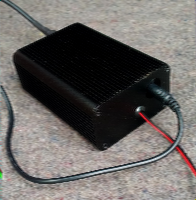
Now we have the e-QSL card image, today as an MFSK64 image.
....
....
....
....
....
RSID: <<2016-08-01T20:22Z
MFSK-64 @ 6070000+1500>>
Sending Pic:665x380;
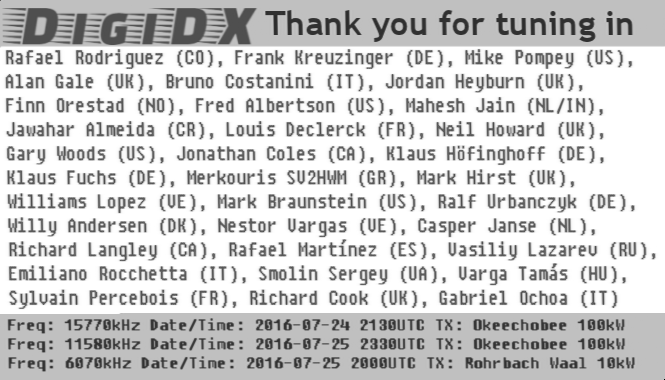
RSID: <<2016-08-01T20:26Z
MFSK-32 @ 6070000+1500>>
Thank you for all the reception reports sent in for last weeks broadcast
and its good to see many people were able to decode the SVG image file.
Several email reports also recognised the logo as the Radio Free Europe
/ Radio Liberty logo for example Jonathan Coles in Canada wrote to say
"The SVG file is, I believe, the Radio Free Europe logo.".
Richard Langley also in Canada emailed regarding the logo "I am quite
familiar with the RFE/RL logo as I had recently used it for illustrating
my archived recording of the last Radio Liberty evening broadcast in
Russian on shortwave:
http://shortwavearchive.com/archive/radio-svoboda-june-25-2016 I also
came across an interesting news item in the archives of "The Ukrainian
Weekly" on the adoption of the RFE/RL orange flame logo on 30 March
2005, replacing the previously used "Freedom Bell" logo:
http://www.ukrweekly.com/old/archive/2005/150511.shtml"
Thank for that interesting article and link to your recording. Thanks
also to Mark Hirst for converting that logo to SVG.
RSID: <<2016-08-01T20:28Z
MFSK-32 @ 6070000+1500>>
Also included in the broadacst was information on the special
anniversary broadcasts C.DX.A Internacional Club in Venezuela. Rafael
Rodriguez from Columbia emailed
reports@digidx.uk
to say "Many thanks to
include the news about special program from C.DX.A Internacional Club, I
am a member and represent in Colombia". Nester Vargas from Venezuela
says "Acceptable signal decoding that allowed 100 % of the text , great
logo "Clubd Diexistas de la Amistad" from Venezuela Friendship which has
unfortunately illegible names listeners . On the other hand the SVG and
HTML format are an alternative for sending texts and images with good
resolution through this medium".
Finally Williams Lopez who sent us the news about this special broadcast
emailed saying "Thank very much for promotion our program club
DX...!!!!".
Thank you for listening, please send reports, comments and shortwave
related news or articles to reports@digidx.uk.
This is DigiDX Signing
off.....
██████╗ ██╗ ██████╗ ██╗██████╗ ██╗ ██╗ ███████╗██╗ ██╗████████╗██████╗ █████╗
██╔══██╗██║██╔════╝ ██║██╔══██╗╚██╗██╔╝ ██╔════╝╚██╗██╔╝╚══██╔══╝██╔══██╗██╔══██╗
██║ ██║██║██║ ███╗██║██║ ██║ ╚███╔╝ █████╗ ╚███╔╝ ██║ ██████╔╝███████║
██║ ██║██║██║ ██║██║██║ ██║ ██╔██╗ ██╔══╝ ██╔██╗ ██║ ██╔══██╗██╔══██║
██████╔╝██║╚██████╔╝██║██████╔╝██╔╝ ██╗ ███████╗██╔╝ ██╗ ██║ ██║ ██║██║ ██║
╚═════╝ ╚═╝ ╚═════╝ ╚═╝╚═════╝ ╚═╝ ╚═╝ ╚══════╝╚═╝ ╚═╝ ╚═╝ ╚═╝ ╚═╝╚═╝ ╚═╝
RSID: <<2016-08-02T18:30Z
OL 8-1K @ 6070000+2200>>
Hello and welcome to the extra version of DigiDX 23, a weekly review of the
latest shortwave and DX news broadcast experimenting with various digital modes.
This extra broadcast includes shortwave news and the e-QSL card.
--- LATEST SHORTWAVE NEWS ---
Classics Experience with Paul Walker returns to shortwave
Alaska based DJ Paul Walker is back with another edition of his The Classics
Experience broadcast.
This broadcast will be two hours long and includes rock and roll music with some
country classics scattered in and occasionally a few audio surprises. For the
first time it will also have a broadcast from Armenia targeted towards Asia and
in particular Japan.
The broadcast will take place on the 26th and 27th of August with the following
schedule:
26th August - WRMI 7570 kHz to the West coast of the US and Canada 0400-0600
26th August - WRMI 11580 kHz to the east coast of the us and Western Europe
2100-2300
27th August - WINB 9265 kHz 0330 to 0530
26th August - Channel 292 6070 kHz to Europe 2200-2400
Frequency and time for broadcast to Asia / Japan is
TBA.
["to be announced" / wird noch
angekündigt]
The last broadcast of the Classics Experience included MFSK32 mode text and
images and hopefully the next broadcast also includes some digital modes.
New clandestine for Eritrea
Last week DigiDX reported on Radio Adel broadcasting to Eritrea every Wednesday
and Saturday on 15205 kHz. Another Eritrean clandestine has started broadcasting
on this frequency on Tuesdays called Radio Al-Mukhtar.
The first half hour at 1500 is in Arabic and the 2nd half is in the Tigrinya
language. As with Radio Adel this clandestine is believed to be broadcast from
Issoudun, France.
Radio New Zealand International new schedule
Radio New Zealand has a new shortwave schedule which came into operation on the
29th of July. The main change being 7245 kHz replacing 9700 kHz from 0659 to
1258 daily. The full schedule is below:
UTC
kHz
Target
Days
0000-0458 15720 (AM) Pacific
Daily
0459-0658 11725 (AM)
Pacific
Daily
0659-1058 7245
(AM)
Pacific
Daily
1059-1258 7245
(AM)
PNG
Daily
1259-1858 6170 (AM)
Pacific
Sat
1259-1650 6170
(AM)
Pacific
Sun-Fri
1651-1850 5975 (DRM) Cook Islands, Tonga, Samoa
Sun-Fri
1850-1950 9760 (DRM) Cook Islands, Tonga, Samoa
Sun-Fri
1859-1958 9700 (AM)
Pacific
Sat
1951-2050 11690 (DRM) Pacific
Sun-Fri
1959-2058 11725 (AM) Pacific
Sat
2051-0000 15720 (AM) Pacific
Daily
Russia to start using two new OTH radar systems
Russian Interfax news agency reported that Russia may attempt to compensate for
the increase in NATO’s military activity by placing two new radar stations in
the Baltic Sea and the Black Sea, which would be able to control the 200-mile
coastal zone. "It is expected
that modified Podsolnuh (Sunflower) over-the-horizon radar units will start
combat duty in the Baltic Sea in 2017," Interfax’s source said, adding that
similar radar could be deployed in the Crimea in 2017. “It can see any warship
that sails through the Bosporus
Strait." The Podsolnuh radar system passed the Russian government tests in 2006.
There are three stations currently on duty: one in the Sea of Okhotsk, another
in the Sea of Japan and the third in the Caspian Sea. Podsolnuh allows its
operators to automatically and
simultaneously detect, track and classify potential threats beyond the radio
horizon. It can find up to 300 offshore objects and 100 air objects, determine
their coordinates and transfer them to targeting complexes and systems of armed
naval vessels and air defense
systems. In June, Podsolnuh’s developer, RTI, told Interfax that the company
plans to supply the Ministry of Defense of the Russian Federation with several
more radars in the future. "In 2017, the Russian Defense Ministry plans to
purchase several stations for the
Navy that will be deployed in the Arctic, as well as at the southern and western
borders of Russia," said the Director General of RTI, Sergey Boev. In March,
Podsolnuh guided warships of the Caspian fleet equipped with the Caliber-NK
missile complex during naval
military exercises.
Story from UA wire -
http://uawire.org/news/russia-to-deploy-two-powerful-radar-systems-in-the-baltic-and-black-seas
--- UPCOMING RELAYS AND SPECIAL BROADCASTS ---
VOA Radiogram will be on air this weekend on the following frequencies, for more
information on the modes to be used visit http://voaradiogram.net/
Sat 0930-1000
5745 kHz
Sat 1600-1630 17580 kHz
Sun 0230-0300 5745 kHz
Sun 1930-2000 15670 kHz
All broadcasts are from Greenville, NC.
IBC - Italian Broadcasting Corporation weekly digital mode broadcasts:
Wednesday 2030-2100 UTC on 6070 kHz via Channel 292 in MFSK32@1500Hz followed by
Olivia 16-500@2200Hz (part of their 2000-2200 broadcast)
Friday 0125-0130 UTC on 9955 kHz via WRMI in MFSK32 (part of their 0100-0130
broadcast).
Saturday 0155-0200 UTC on 11580 kHz via WRMI (part of their 0130-0200
broadcast).
For more information and the complete schedule see
http://ibcradio.webs.com/
Now follows this week's e-QSL card in html format. The html code has been
edited, in order the output to look similar to the original eQSL image, and it
has been stripped down to the essential code in the direction of reducing the
transmission time.
In order to view the QSL card, please copy the received text from <html> to
</html> to a text editor and save it as html file (e.g. QSL22.html) which can be
viewed in your favourite browser.
|
<html>
<style>
body *{font-family: Arial, sans-serif}
h2 {color: DarkBlue;
font-size: 30pt; font-weight: bold;
margin-top: 5px; margin-bottom: 0px}
h3 {color: DarkBlue;
font-size: 16pt; font-weight: bold;
margin-top: 0px; margin-bottom: 0px}
p {color: Red; font-size: 18pt; font-weight: bold}
</style>
<link href='https://fonts.googleapis.com/css?family=Faster+One' rel='stylesheet'
type='text/css'>
<body>
<table style="width:800; border: none; border-collapse: collapse" cellpadding="5">
<tr><td bgcolor="#d5d5d5" style="width:40%; text-align:center; color:red;
font-family: 'Faster One', cursive; font-size:50pt;">DigiDX</td>
<td bgcolor="#d5d5d5"><h2>Thank you for tuning in</h2></td></tr>
<tr><td colspan="2" bgcolor="#e5e5e5">
<p>Rafael Rodriguez (CO), Frank Kreuzinger (DE), Mike Pompey (US),<br>
Alan Gale (UK), Bruno Costanini (IT), Jordan Heyburn (UK),<br>
Finn Orestad (NO), Fred Albertson (US), Mahesh Jain (NL/IN),<br>
Jawahar Almeida (CR), Louis Declerck (FR), Neil Howard (UK),<br>
Gary Woods (US), Jonathan Coles (CA), Klaus Höfinghoff (DE),<br>
Klaus Fuchs (DE), Merkouris SV2HWM (GR), Mark Hirst (UK),<br>
Williams Lopez (VE), Mark Braunstein (US), Ralf Urbanczyk (DE),<br>
Willy Andersen (DK), Nestor Vargas (VE), Casper Janse (NL),<br>
Richard Langley (CA), Rafael Martínez (ES), Vasiliy Lazarev (RU),<br>
Emiliano Rocchetta (IT), Smolin Sergey (UA), Varga Tamás (HU),<br>
Sylvain Percebois (FR), Richard Cook (UK), Gabriel Ochoa (IT)</p>
</td></tr>
<tr><td colspan="2" bgcolor="#b5b5b5">
<h3>Freq: 15770 kHz   Date/Time: 2016-07-24 2130 UTC   TX: Okeechobee
100 kW<br>
Freq: 11580 kHz   Date/Time: 2016-07-24 2330 UTC   TX: Okeechobee 100
kW<br>
Freq: 6070 kHz   Date/Time: 2016-07-25 2000 UTC   TX: Rohrbach Waal 10
kW</h3>
</tr></td>
</table>
</body>
</html>
|
Thank you for all the reception reports sent in for last week’s broadcast and
it’s good to see many people were able to decode the SVG image file. Several
email reports also recognised the logo as the Radio Free Europe / Radio Liberty
logo for example Jonathan Coles
in Canada wrote to say "The SVG file is, I believe, the Radio Free Europe
logo.".
Richard Langley also in Canada emailed regarding the logo "I am quite familiar
with the RFE/RL logo as I had recently used it for illustrating my archived
recording of the last Radio Liberty evening broadcast in Russian on shortwave:
http://shortwavearchive.com/archive/radio-svoboda-june-25-2016 I also came across an interesting news item in the
archives of "The Ukrainian Weekly" on the adoption of the RFE/RL
orange flame logo on 30 March 2005, replacing the previously used "Freedom Bell"
logo:
http://www.ukrweekly.com/old/archive/2005/150511.shtml"
Thank for that interesting article and link to your recording. Thanks also to
Mark Hirst for converting that logo to SVG.
Also included in the broadacst was information on the special anniversary
broadcasts C.DX.A Internacional Club in Venezuela. Rafael Rodriguez from
Colombia emailed reports@digidx.uk
to say "Many thanks to include the news about
special program from C.DX.A Internacion
al Club, I am a member and represent in Colombia". Nester Vargas from Venezuela
says "Acceptable signal decoding that allowed 100% of the text, great logo "Club
Diexistas de la Amistad" from Venezuela Friendship which has unfortunately
illegible names listeners. On
the other hand the SVG and HTML format are an alternative for sending texts and
images with good resolution through this medium".
Finally Williams Lopez who sent us the news about this special broadcast emailed
saying "Thank very much for promotion our program club DX...!!!!".
DigiDX weekly schedule:
Sunday 2130 - 15770 kHz via WRMI (Okeechobee, FL, USA)
Sunday 2330 - 11580 kHz via WRMI (Okeechobee, FL, USA)
Monday 2000 - 6070 kHz via Channel 292 (Rohrbach Wall, DE)
Daily 0530/1830 - 6070 kHz via Channel 292 (Rohrbach Wall, DE)
Any other extra broadcasts will be listed on http://www.digidx.uk
If you enjoy DigiDX and find the service useful please consider donating via
Paypal to reports@digidx.uk or via our Patreon page. Any money donated will go
towards paying for airtime to keep DigiDX on the air to Europe and North
America.
Every donation will help no matter how little
-https://www.patreon.com/digidx.
/ reports@digidx.uk
Thank you for listening, please send reports, comments and shortwave related
news or articles to reports@digidx.uk.
This is DigiDX Signing off...
██╗ ██╗██████╗ ██████╗ ██████╗ █████╗ ██████╗ ██╗ ██████╗ ██████╗ ██████╗ █████╗ ███╗ ███╗
██║ ██╔╝██╔══██╗██╔════╝ ██╔══██╗██╔══██╗██╔══██╗██║██╔═══██╗██╔════╝ ██╔══██╗██╔══██╗████╗ ████║
█████╔╝ ██████╔╝██║ ██████╔╝███████║██║ ██║██║██║ ██║██║ ███╗██████╔╝███████║██╔████╔██║
██╔═██╗ ██╔══██╗██║ ██╔══██╗██╔══██║██║ ██║██║██║ ██║██║ ██║██╔══██╗██╔══██║██║╚██╔╝██║
██║ ██╗██████╔╝╚██████╗ ██║ ██║██║ ██║██████╔╝██║╚██████╔╝╚██████╔╝██║ ██║██║ ██║██║ ╚═╝ ██║
╚═╝ ╚═╝╚═════╝ ╚═════╝ ╚═╝ ╚═╝╚═╝ ╚═╝╚═════╝ ╚═╝ ╚═════╝ ╚═════╝ ╚═╝ ╚═╝╚═╝ ╚═╝╚═╝ ╚═╝
|
http://www.kbcradio.eu/
RSID:
<<2016-07-31T00:31Z
MFSK-32 @
webstream+1500>>
This photo of Dutch summer foliage, provided by Edwin Simonis, DJ
on KBC 1602AM/DAB+, should look good even via shortwave ...
|
Sending Pic:149x112C; |
via
facebook |
|

|
 |
https://www.facebook.com/TheMightyKbc/posts/1130985640276553
Please report decode to
themightykbc@gmail.com
██╗ ██╗ ██████╗ █████╗ ██████╗ █████╗ ██████╗ ██╗ ██████╗ ██████╗ ██████╗ █████╗ ███╗ ███╗
██║ ██║██╔═══██╗██╔══██╗ ██╔══██╗██╔══██╗██╔══██╗██║██╔═══██╗██╔════╝ ██╔══██╗██╔══██╗████╗ ████║
██║ ██║██║ ██║███████║ ██████╔╝███████║██║ ██║██║██║ ██║██║ ███╗██████╔╝███████║██╔████╔██║
╚██╗ ██╔╝██║ ██║██╔══██║ ██╔══██╗██╔══██║██║ ██║██║██║ ██║██║ ██║██╔══██╗██╔══██║██║╚██╔╝██║
╚████╔╝ ╚██████╔╝██║ ██║ ██║ ██║██║ ██║██████╔╝██║╚██████╔╝╚██████╔╝██║ ██║██║ ██║██║ ╚═╝ ██║
╚═══╝ ╚═════╝ ╚═╝ ╚═╝ ╚═╝ ╚═╝╚═╝ ╚═╝╚═════╝ ╚═╝ ╚═════╝ ╚═════╝ ╚═╝ ╚═╝╚═╝ ╚═╝╚═╝ ╚═╝
http://voaradiogram.net/
RSID: <<2016-07-
30T16:01Z
MFSK-32
@ 17580000+1500>>
Welcome to program 174 of VOA Radiogram from the Voice of
America.
I'm Kim Andrew Elliott in Washington.
Here is the lineup for today's program, all in MFSK32 centered on
1500 Hz ...
1:31 Program preview (now)
2:41 Great Red Spot may heat Jupiter’s
atmosphere*
8:31
High-speed travel in near-vacuum tube*
12:44 Strange purple orb in Pacific Ocean**
18:43 Three images
26:08 Closing announcements*
* with image
** formatted for Flwrap
Please send reception reports to radiogram@voanews.com.
And visit voaradiogram.net.
Twitter: @VOARadiogram
Enormous Storm May Be Heating Jupiter's Atmosphere, Scientists
Think
Reuters via voanews.com
July 27, 2016
CAPE CANAVERAL, FLORIDA - Scientists have long wondered why
Jupiter's upper atmosphere has temperatures similar to those of
Earth, even though the biggest planet in the solar system is five
times farther away from the sun.
The answer may be the Great Red Spot, an enormous storm big
enough to swallow three Earths that has been raging on Jupiter
for at least three centuries, a study showed Wednesday.
Using an infrared telescope at Hawaii's Mauna Kea Observatory,
scientists discovered that the upper atmosphere above the Great
Red Spot — the largest storm in the solar system — is hundreds of
degrees hotter than anywhere else on the planet.
It could be a coincidence or a major clue, said Boston University
physicist James O'Donoghue, lead scientist of the study published
in the journal Nature.
The storm spans 13,670 miles by 7,456 miles (22,000 kilometers by
12,000 kilometers) and is located in Jupiter's lower atmosphere.
The top of its clouds reach altitudes of about 31 miles (50
kilometers).
The newly found hot spot must be heated from below, the study
concluded, though the exact process by which heat is transferred
remains unknown. The most likely energy source is acoustic waves,
the study said.
Color change
Scientists also are unsure about why the storm is brick red and
about why it has changed color over time. In a 1900 report in the
Seattle Post-Intelligencer, scientists described the oval storm
as salmon pink. Recent images from the Hubble Space Telescope
show it has become tinged with orange and more circular.
Like a hurricane on Earth, the spot's center is relatively calm,
but farther out, winds reach 270 mph to 425 mph (430 kph to 680
kph). Because there is no land on Jupiter, which is made almost
entirely of hydrogen and helium, the storm can never make
landfall and dissipate.
"The Great Red Spot is like a wheel that's wedged between two
conveyor belts running in opposite directions," said planetary
scientist Glenn Orton, with NASA's Jet Propulsion Laboratory in
Pasadena, California. "One is adding momentum to it at the top,
and another is adding momentum at the bottom. Together, they feed
the vortex and essentially keep it alive."
But the storm may not be alive much longer. It has been shrinking
for the last 100 years, Orton said.
More information is expected from NASA's Juno spacecraft, which
arrived at Jupiter on July 4.
http://www.voanews.com/content/enormous-storm-heating-jupiter-atmosphere/3438063.html
Image: This image of the Great Red Spot, an intense storm system
thousands of miles wide, was taken by the Galileo imaging system
on June 26, 1996.
Sending Pic:221x121C;

This is VOA Radiogram from the Voice of America.
Please send reception reports to radiogram@voanews.com.
VOA NEWS
Vacuum Tube Transportation Company Opens Its First Factory
George Putic
July 28, 2016
Ground transportation that's much faster than modern planes made
another major step forward with the announcement that U.S.
company Hyperloop One opened its first factory this week outside
Las Vegas.
Its 170 engineers, technicians and highly skilled workers are
expected to build a working prototype of a superfast vacuum tube
transportation device by 2017.
The name Hyperloop was introduced in 2012 by the U.S.-based South
African billionaire entrepreneur Elon Musk, the owner of Tesla
Motors and SpaceX Corporation.
According to his idea, passengers sitting in a closed capsule
would travel at high speed through a near-vacuum tube with very
low air resistance, while magnetic levitation would keep the pod
friction-free. The underground or aboveground travel would be
immune to weather changes and collisions and would require little
energy.
The projected top speed is set to be 1,220 kilometers per hour
(750 miles per hour).
A pre-feasibility study envisages a Hyperloop tube built between
Stockholm and Helsinki, cutting the travel between the two cities
from 3 1/2 hours to about 30 minutes.
http://www.voanews.com/content/vacuum-tube-transportation-company-opens-first-factory/3438930.html
Image: Artist's rendering of a Hyperloop pod in motion ...
Sending Pic:266x118C;
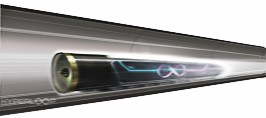
This is VOA Radiogram from the Voice of America.
Please send reception reports to radiogram@voanews.com.
The next VOA News story is formatted for Flwrap. When it has
finished transmitting, in Fldigi: File > Folders > NBEMS files >
WRAP (folder) > recv (folder): drag the most recent .wrap file to
the right window of Flwrap. If there is no checksum error, the
wrap file will appear as VOA_Purple_270716.html in the same
folder where the .wrap file was found.
If there is a checksum error, or Flwrap otherwise does not work,
or if you do not have Flwrap installed, copy the content in the
Fldigi receive pane from <html> through </html>, paste it to a
text editor (like Notepad), save it as an .html file, then open
the file in a web browser.
.
.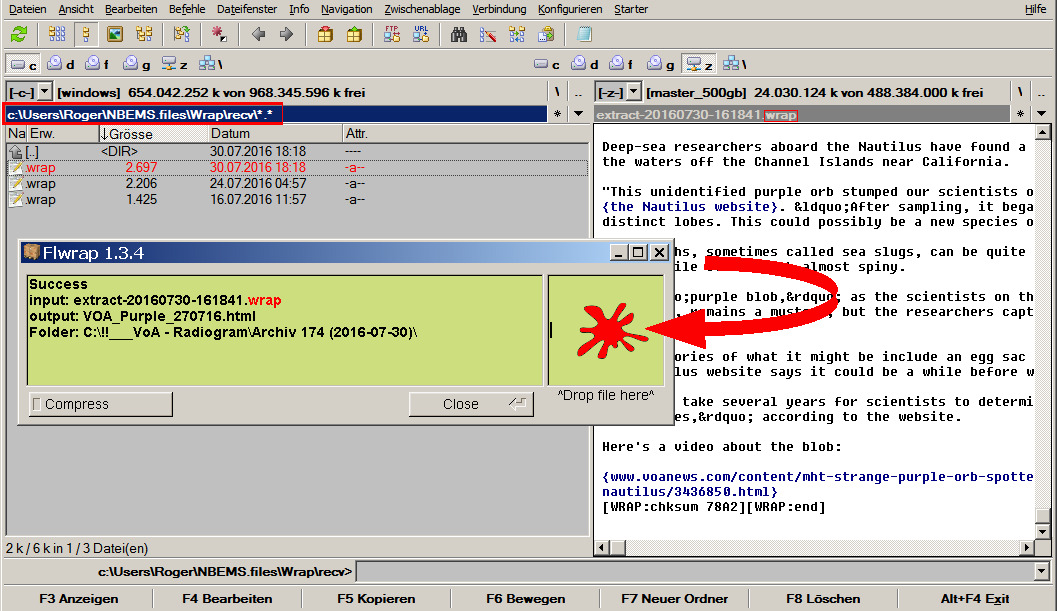
.
.
.
[WRAP:beg][WRAP:crlf][WRAP:fn
VOA_Purple_270716.html]<html><style>body{font-family:Arial,sans-serif;width:640px}
h2{color:#132FBE;font-size:24pt;padding-top:25px}
h3{color:red;font-size:16pt}
h4{color:gray;font-size:10pt}
figure{margin:0}
table, td {text-align:left}
</style><body>
<table><tr><td><svg version="1.1" width="98" height="42">
<polygon fill="#132FBE" points="22,25 29,1 43,1 30,42 15,42 0,1 15,1"/>
<polygon fill="#132FBE" points="77,17 83,42 98,42 84,1 70,1 55,42 70,42"/>
<circle fill="#FFFFFF" cx="49" cy="21" r="21"/>
<circle fill="#132FBE" cx="49" cy="21" r="10"/>
</svg></td><td><h2>Voice of America</h3></td></tr>
</table>
<h3><a href="http://www.voanews.com/">News</a> / <a href="http://www.voanews.com/section/science-and-technology/2214.html">Science
& Technology</a></h3>
<h1>Strange Purple Orb Spotted in Deep Waters Off California</h1>
<figure>
<img
src="http://gdb.voanews.com/4C1CDF45-25B2-456E-A12F-566E608ED1E9_w640_r1_s.jpg"
width="640" height="360">
<figcaption>A strange purple blob was spotted in deep waters off California.
(Nautilus)</figcaption>
</figure>
<h4>VOA News<br /><smaller>July 27, 2016</smaller></h4>
<p>Deep-sea researchers aboard the Nautilus have found a strange creature
lurking in the waters off the Channel Islands near California.</p>
<p>"This unidentified purple orb stumped our scientists onboard,”
according to <a href="http://www.nautiluslive.org/" target="_blank">the Nautilus
website</a>. “After sampling, it began to unfold to reveal two distinct
lobes. This could possibly be a new species of nudibranch."</p>
<p>Nudibranchs, sometimes called sea slugs, can be quite colorful. Some look
like slugs, while others look almost spiny.</p>
<p>The “purple blob,” as the scientists on the research vessel
Nautilus called it, remains a mystery, but the researchers captured the sample
and plan on analyzing it further.</p>
<p>Other theories of what it might be include an egg sac or some kind of embryo,
but the Nautilus website says it could be a while before we know.</p>
<p>"It could take several years for scientists to determine if this
organism is a new species,” according to the website.</p>
<p><strong>Here's a video about the blob:</strong><iframe width="505"
height="284" src="https://www.youtube.com/embed/pqyKrvk0aZo" frameborder="0"
allowfullscreen></iframe></p>
<p><a href="http://www.voanews.com/content/mht-strange-purple-orb-spotted-in-waters-off-california-nautilus/3436850.html">www.voanews.com/content/mht-strange-purple-orb-spotted-in-waters-off-california-nautilus/3436850.html</a></p>
</html>[WRAP:chksum 78A2][WRAP:end]
Decoded uncompressed FLWRAP-message
==>
VOA_Purple_270716.html
==> Inlineframe:
This is VOA Radiogram from the Voice of America.
Please send reception reports to radiogram@voanews.com.
The image of the purple orb in the html file just transmitted is
transferred to your computer via the Internet. Here is the same
photo (cropped) of the purple orb transmitted via shortwave as an
MFSK32 image ...
Sending Pic:258x153C;

Another image: Sama Dizayee from VOA Kurdish Service took this
picture from her building's rooftop during the lightening in
Washington D.C., July 25, 2016 ...
Sending Pic:246x162C;
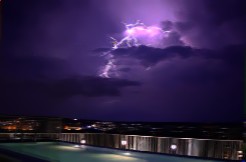
Time for one more image: A DC-10 fire fighting aircraft makes a
retardant drop as fire fighters continue to battle the so-called
Sand Fire in the Angeles National Forest near Los Angeles,
California, July 25, 2016 ...
Sending Pic:238x134C;
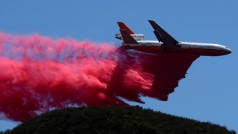
Please send reception reports to radiogram@voanews.com.
And visit voaradiogram.net.
Twitter: @VOARadiogram
Thanks to colleagues at the Edward R. Murrow shortwave
transmitting station in North Carolina.
I'm Kim Elliott. Please join us for the next VOA Radiogram.
This is VOA, the Voice of America.
Sending Pic:506x45C;

www.rhci-online.net/radiogram/radiogram.htm









